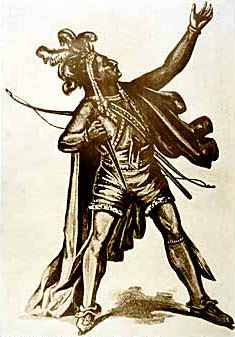Encyclopedia Dubuque
"Encyclopedia Dubuque is the online authority for all things Dubuque, written by the people who know the city best.”
Marshall Cohen—researcher and producer, CNN
Affiliated with the Local History Network of the State Historical Society of Iowa, and the Iowa Museum Association.
MIAMI
MIAMI. An Algonquian tribe that convinced Nicholas PERROT in 1690 to settle along the MISSISSIPPI RIVER. Eager to trade with Perrot, the Native Americans showed Perrot their rich supply of furs and gave him a piece of LEAD ore nearly free of impurities. They claimed to have found it along the banks of a stream flowing into the Mississippi. Investigating the source of the lead along CATFISH CREEK, Perrot found the mineral in fissures that made recovery of the ore somewhat difficult.
The Miami were divided into bands known as the Atchatchakangouen, Kilatika, Mengakonkia, Pepicokia, Wea, and Piankashaw. The first three joined to become the Crane Branch. The Pepicokia became part of the Wea and Piankashaw that acted as separate tribes.
On the basis of merit, the Miami elected a village chief. Delegates from each village attended a band council that then chose representatives to a tribal council. The political structure was based on a clan system in which each individual inherited the clan of his/her father. Marriage within a clan was forbidden.
Houses were built of poles covered with rush mats. Village life was based on agriculture; the Miami were recognized for growing a superior variety of corn. Driven west of the Mississippi River in 1650 by warring Iroquois, the Miami met fierce DAKOTA who drove them back into Wisconsin. By the time of their meeting with Perrot, the Miami were enjoying a trading alliance with the French who negotiated a peace between the Iroquois and Miami in 1701.


